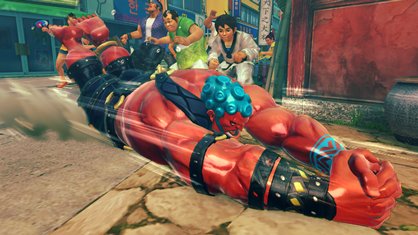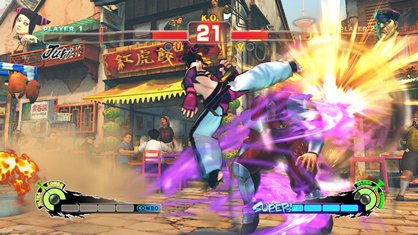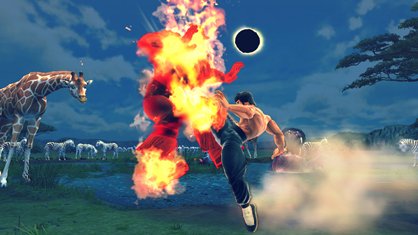Super Street Fighter IV: Trials Video Guide
Tear through SSFIV’s trial challenges with these helpful videos from VesperArcade

Street Fighter can be baffling to the newcomer, especially if you’ve been raised on button mashing and joystick waggling. Learning to do basic combos and figuring out each character’s special and normal moves is a huge part of getting good at the game. VesperArcade has put up some great videos showing how to accomplish each character’s trial challenge, with picture in picture so you can watch the joystick movements (sorry to controller users, you’ll have to make due without).
Most importantly, the videos show you exactly where you need to be positioned and exactly what version of the move you need to use. Trial mode’s biggest pain is that it only gives you rough directions on how to do the combos. Fortunately, these vids will have you racking up the icons and titles in no time.

General Tips:
1. Spacing is essential: Depending on your character, they’ll do different moves depending on how close/far they are from the opponent, even if you’re just pressing a single button and no direction. Usually only one of these moves will work for the trial combo and it is usually the version that happens at close range.
2. Hitting “meaty”: The term meaty is used to describe a hit on an opponent that occurs very deep in their hit box. The best example is a jumping kick that hits very late in the jump, usually around the character’s chest. This allows you to be as close to your opponent as possible after hitting them, which makes combos easier to pull off.
3. Chaining moves: Combos work on the idea that you can do certain chains of moves on a character before they complete their stun animation. Watch what happens when you hit someone and you will see them reel back from the hit. If another attack can connect before the stun animation completes, it’s a combo. The length of character’s stun animation differs depending on what move they’ve been hit with. Traditionally heavy attacks result in longer stuns, but the moves take longer to connect, conversely light punches and kicks result in very little stun but are extremely quick.

4. Buffering: This term goes hand in hand with chaining moves as it allows for special moves to come out as soon as another move finishes. For example, Ryu’s crouching medium kick combos into his fire ball. Since you’re already crouching, just roll the joystick forward and time it so that as soon as you press the punch button for the fireball your MK is just ending. Buffering allows you to stay one step ahead and execute your special moves as soon as possible.
5. Learn the FADC: One of the most boggling techniques for new players is the FADC or Focus Attack Dash Cancel. The FADC allows you to cancel a move before it would normally finish, givinging you the chance to continue combing an opponent. The most common example is the shoryuken: when a normal one hits, Ryu is unable to combo out of it because the entire move involves him rising up and falling back down after the punch. A Focus Attack allows Ryu to cancel the move’s rising animation after its first hit, allowing him to continue hitting the opponent, who is now falling from getting hit by the Shoryuken.

While the Focus Attack allows you to cancel the move, simply pressing it just means that Ryu will do a quick Focus Attack after the shoryuken that will not hit. In order to capitalize and get under the falling opponent, you need to dash cancel out of the Focus Attack by pressing forward (or backward) twice. This all must be done very quickly; you’ll want to do your dash move immediately after tapping MP and MK. The command should be performed continuously, with no breaks, like this:
Shoryuken>MP+MK after the first hit>forward forward>Shoryuken
It certainly requires some nimble fingers, but think of it like being a kid and getting to skip dinner and just get desert; the FADC gives you everything you want and removes the bad parts you don’t.
Videos:
Abel - Blanka | C. Viper - Dan | Dee Jay - Fei Long | El Fuerte - Guy | Hakan - M.Bison | Makoto - Sagat | Sakura - Zangief
Weekly digests, tales from the communities you love, and more



